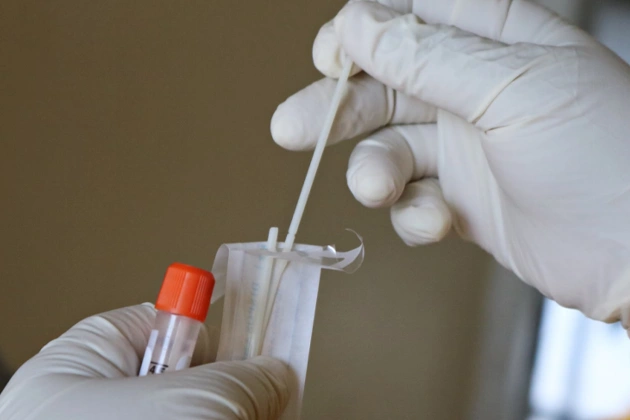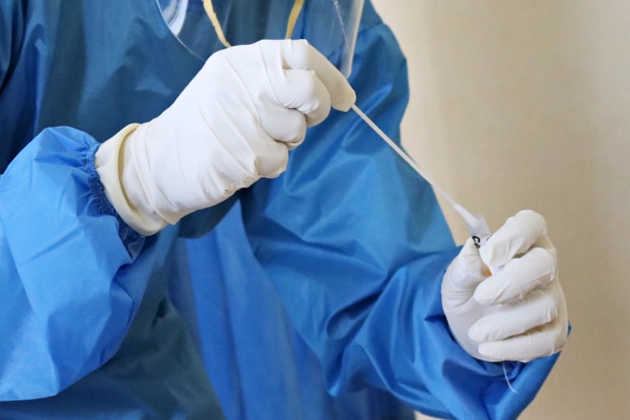In the United States, there are about 14 billion clinical lab tests performed annually. These tests play a crucial role in diagnosing conditions, informing care, and monitoring treatment, and the demand is only expected to grow over the next decade.
Data estimates that around 70% of medical decisions are based on these tests. Also known as pathology tests, they are invaluable to the healthcare system and can be used to test for a range of conditions, such as cancer, diseases, and viruses.
Polymerase chain reaction (PCR) tests — a type of pathology test — also played a crucial part in the management of the COVID-19 pandemic. The test allowed healthcare professionals to diagnose and track the disease, and inform public health measures.
Whether you want to improve your health literacy or you’re studying a health-related degree, such as a PhD nursing course, understanding PCR tests can help you broaden your knowledge.
What is a PCR test?
PCR is an acronym for polymerase chain reaction, which is a process that was invented by Dr. Kary Mullis in 1983. PCR allows a small amount of DNA to be copied in large quantities over a short period of time.
This process allows a scientist to essentially ‘amplify’ the DNA collected from the genetic material, so they can analyze it. Although PCR tests are most commonly associated with COVID-19, they can be used to detect more than just infectious diseases.
What can it detect?
PCR tests are one of the most commonly ordered pathology tests in the world. Healthcare professionals can perform one to diagnose and/or detect a range of conditions, including:
- Infectious diseases (viruses, bacteria, fungi, and parasites).
- Genetic diseases, such as cystic fibrosis and fragile X syndrome.
- Certain types of cancer.
- Identify genetic changes that increase the risk of certain diseases.
- Gene changes for prenatal testing.
PCR testing can also be used in forensic crime analysis as a tool in genetic fingerprinting. It allows scientists to amplify even small amounts of DNA from evidence like blood, hair, or skin cells. This can help with:
- Suspect identification (DNA profiling)
- Identification of missing persons and disaster victims
- Exoneration of wrongfully convicted criminals
- Paternity and kinship testing (family relationships)
The process can even be used to amplify fragmented DNA, so the genetic material can be used for analysis. Similarly, it also allows forensic investigators to analyze old or degraded samples, which is common in the field.
Are PCR tests only swabs?
Although most people would be familiar with PCR testing in the form of swabs, PCR tests come in many different forms depending on the procedure. These include:
- Blood tests
- Swabs
- Tissue
- Saliva
- Mucus
- Urine
- Faeces
As long as there is genetic material and DNA to amplify, PCR testing can be used to screen for infectious diseases and check for gene changes. A few of the common tests and procedures utilizing PCR include:
- Testing for sexually transmitted infections (e.g., HIV, chlamydia, and syphilis)
- Checking for any respiratory viruses (e.g., influenza and COVID-19)
- Amniocentesis — checking the amniotic fluid to diagnose genetic disorders in fetuses
- Preimplantation genetic diagnosis/screening for in vitro fertilization (IVF)
The process of a PCR test will depend on what it is for. For example, a blood test involves venepuncture (drawing blood), whereas screening for a respiratory illness requires a nasopharyngeal swab.
How does it work?
The PCR test is also sometimes known as “molecular photocopying.” This is because it consists of copying the same, small segments of DNA over and over until there’s enough DNA necessary for molecular and genetic analyses — it’s almost impossible to study isolated pieces of DNA without PCR amplification.
To amplify a segment of DNA using PCR, the sample is first heated so the DNA ‘denatures.’ This is the process where a segment of DNA (think of the double-stranded helix design) is separated into two pieces of single-stranded DNA.
Next, an enzyme called “Taq polymerase” synthesizes and builds two new strands of DNA using the original strands as a template. Essentially, this process results in the duplication of the original DNA.
The duplicated strands are then used to create two more copies, and the cycle keeps on repeating until there’s enough DNA for genetic analysis. Typically, this denaturing and synthesizing cycle is repeated as many as 30 or 40 times, leading to more than a billion copies of the original DNA.
The PCR process is also completely automated and only takes a few hours using a machine called a thermocycler.
The types of PCR
Since Dr. Kary Mullis developed the original PCR testing process in 1983, it has evolved, and other scientists have made modifications. Now, there are various types of PCR techniques available for different purposes, with the two most common being reverse-transcriptase PCR and quantitative PCR.
- Reverse-transcriptase PCR (RT-PCR): This is the only type of PCR that can amplify RNA. Although COVID-19 tests are most commonly associated with PCR tests, because SARS-CoV-2 is an RNA virus, healthcare professionals actually use the RT-PCR method.
- Real-time PCR/Quantitative PCR (Q-PCR): This type of PCR method is known as quantitative or real-time PCR. This allows scientists to see if the target DNA is in a sample without additional testing, so it delivers results faster than a conventional PCR. It can also be combined with other types of PCR, including RT-PCR.
PCR is often heralded as one of the most important scientific advances in molecular biology and has completely revolutionized healthcare. The invention of PCR also led Dr. Kary Mullis to win the 1993 Nobel Prize in Chemistry.











